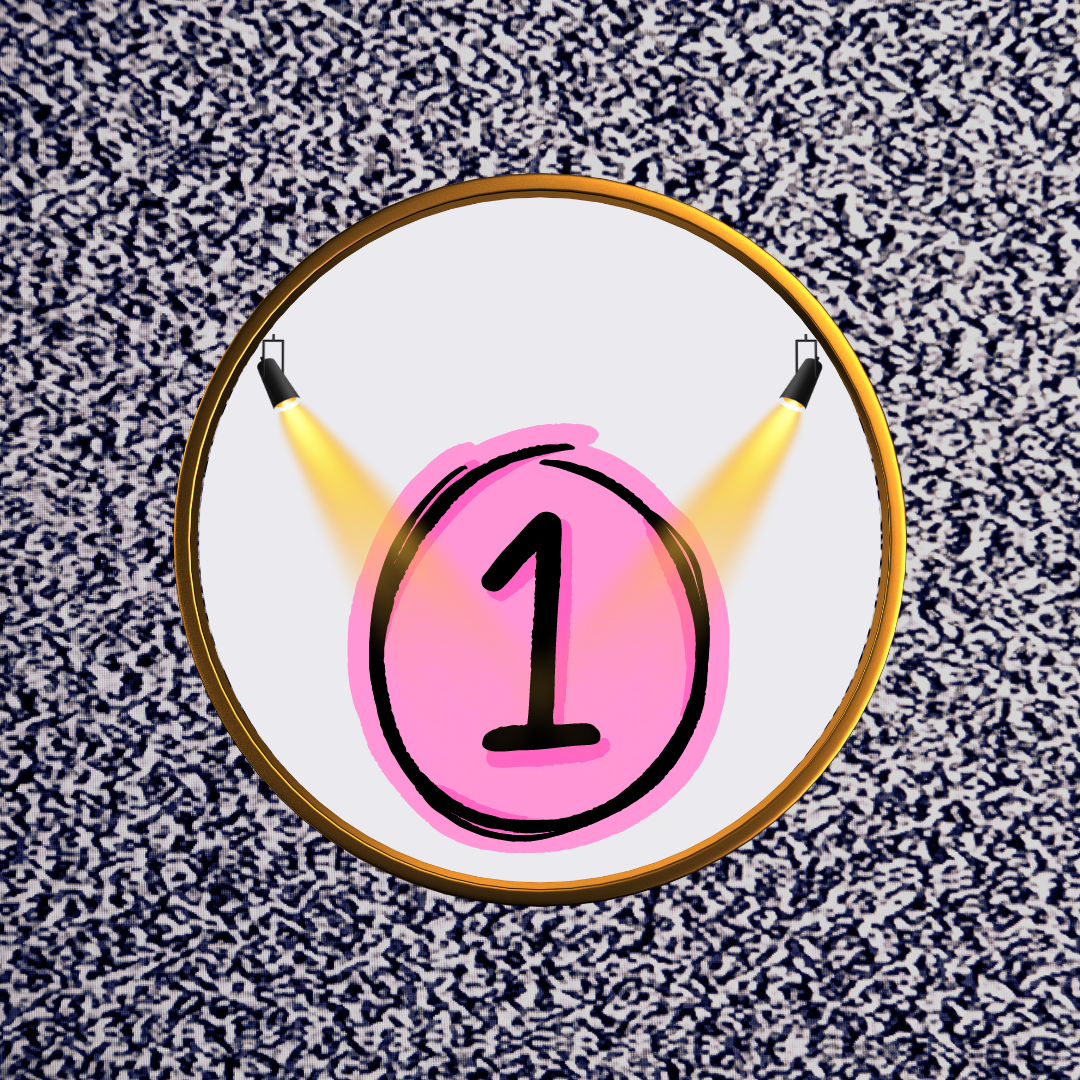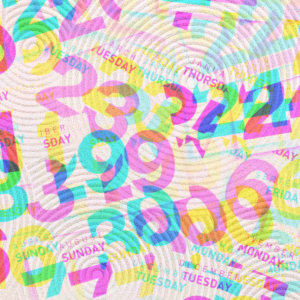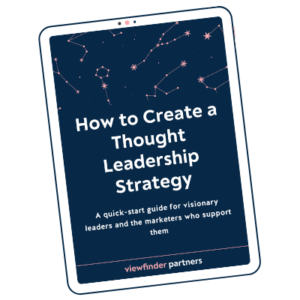How would you describe yourself in one word?
It’s a tough question, even for the most self-aware among us.
We contain multitudes, and any given person has a wide range of attributes that describe them, depending on the day, the season, and who you’re asking.
Funny. Optimistic. Confident. Intelligent. Kind. Humble. Strong.
Now, here’s a related question: What’s the one thing you want to be known for professionally? What’s the big idea you want people to associate with you?
Let me tell you that this is a VERY TOUGH QUESTION for most people, even people who are actively investing time, money, and energy into developing their thought leadership platform.
When I ask this question, I often get a long pause in response. Then maybe an uncomfortable throat-clearing and then a long string of jargon or general categories…with caveats, qualifiers, and a lot of question marks.
“Leveraging…supply chain…optimization?”
“Building the future of…work?”
I’m not making fun of this response. I get it! When we’re asked this simple question (What do you want to be known for?), the pressure is often too intense. We clam up. All of our expertise, experience, and confidence go out the window. We’re flummoxed, overwhelmed, or just at a loss.
I see this happen to very smart people all the time. And it doesn’t just happen when someone tries to pinpoint their flagship idea. It also happens when they go to write a LinkedIn post, draft an article, or outline a keynote.
For some reason, instead of clarifying the BIG IDEA—the one signature takeaway we want to communicate—human nature pushes us to start piling on the details. We list all of our ideas about a given topic. We add caveats, side conversations, and long lists. Then, we glob on research, statistics, and facts to make it all seem more rigorous and important.
But all the facts, lists, and evidence in the world don’t add up to a very strong argument if we don’t know what we’re arguing.
The power of synthesizing your ideas
This phenomenon has led me to a standard phrase that I find myself repeating to clients old and new:
You get one idea.
Not ten ideas. Not one and a half. Just. One. That’s all your audience can process at a time. And if you want to be known for something, you better know what that thing is and do your best to hammer it home over and over.
You get one idea.
This is true for a keynote, a Harvard Business Review article, a LinkedIn post, and even, I’d argue, a book. You need a clear headline—one thesis. Then, you can add all of your supporting thoughts and research, but only if it all adds up to drive home your one big idea.
The magic of powerful thought leadership—and the power of building a platform over time—comes from synthesizing. The most compelling thinkers help us simplify and essentialize big ideas. They find the core, the heart, and the center and bring us closer to understanding them.
How to clarify your core idea
If you’re feeling wishy-washy about the core idea you want to be known for, or if you’re trying to nail down a clear thesis for an article or presentation, try asking yourself these questions:
💡If you wrote a book tomorrow, what would the title be?
💡Many years from now, if your career had a tombstone, what would you want it to say?
💡If you had to write your big idea in a three-word sentence (NOUN is VERB), what would it be?
💡To describe your core work, fill in the blanks here: I help PEOPLE do SOMETHING using TOOLS/FRAMEWORKS. (I call this the one-sentence thought leadership strategy – you can read more here.)
And when you find yourself writing a too-long email, getting too verbose in a presentation, or typing aimlessly, rein yourself in. Don’t hide behind the details. Remember that your idea is best communicated when you keep it simple. Explore one idea at a time.







